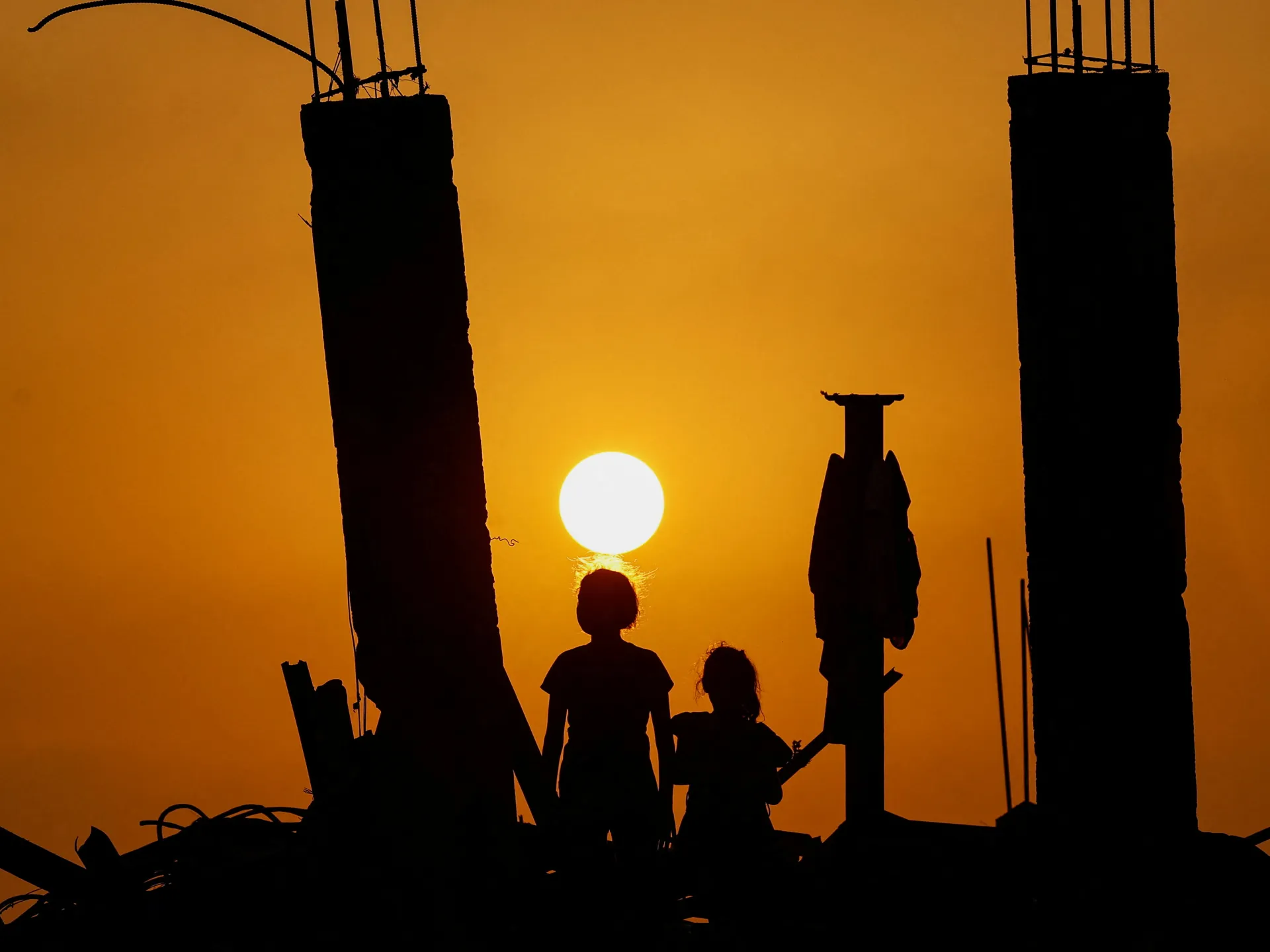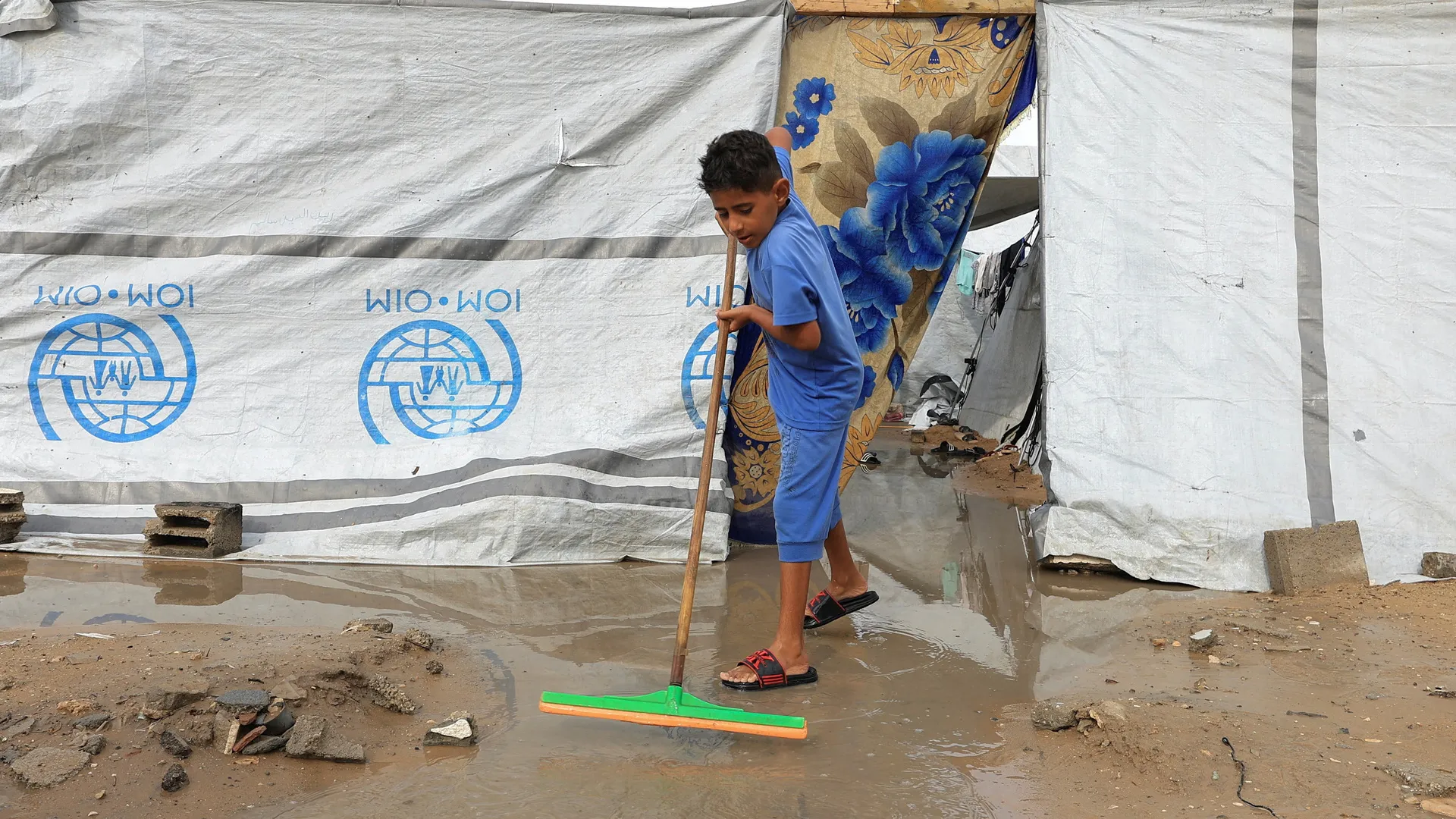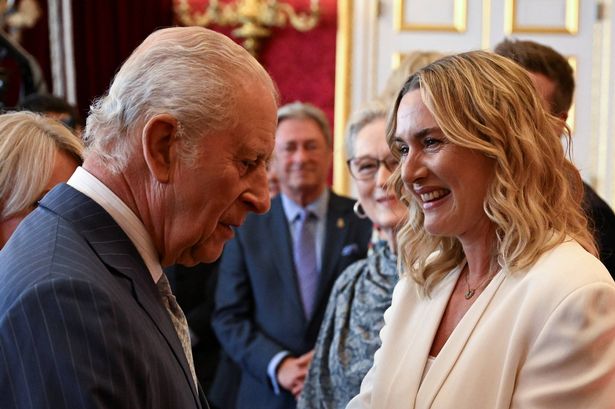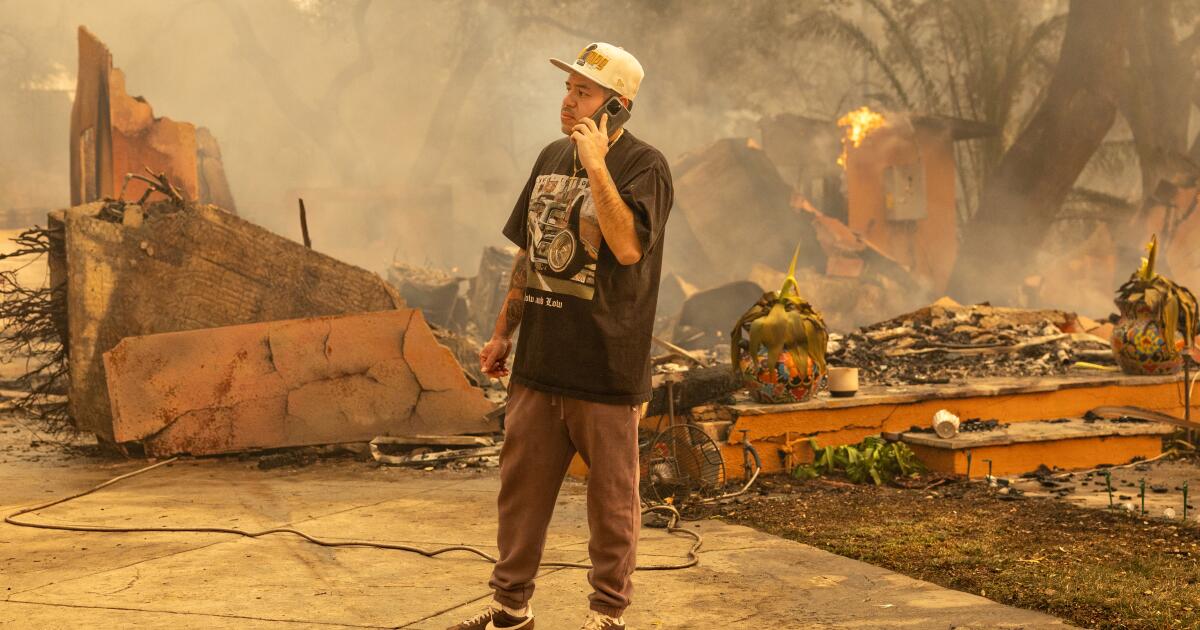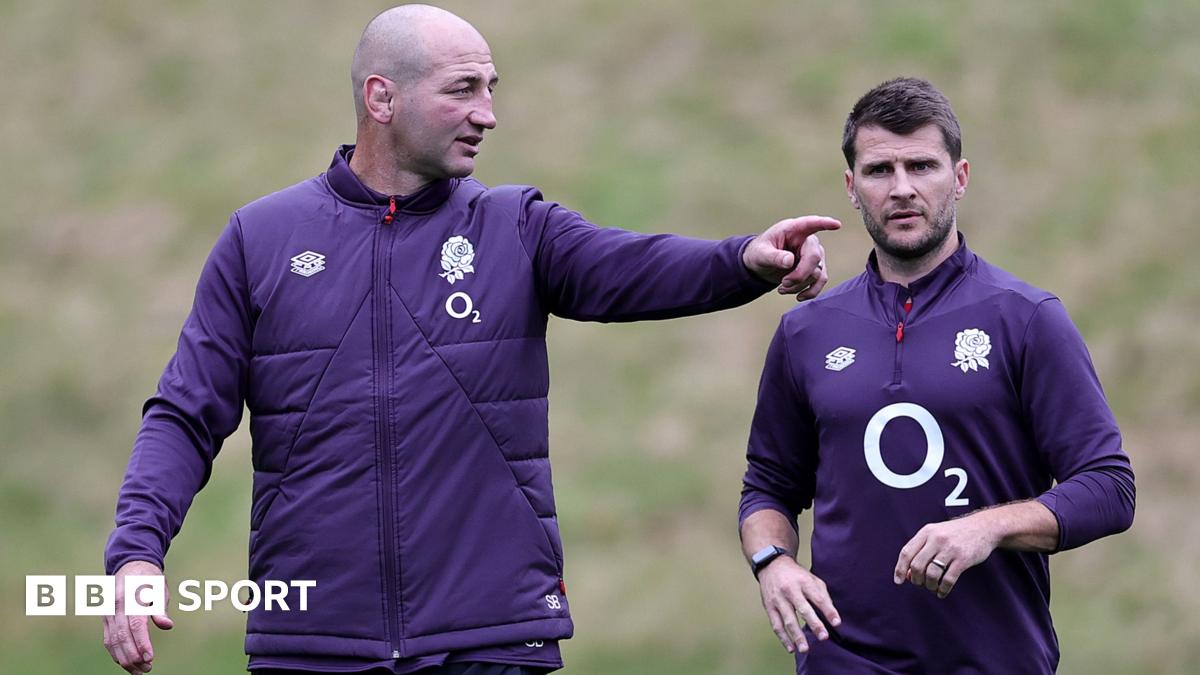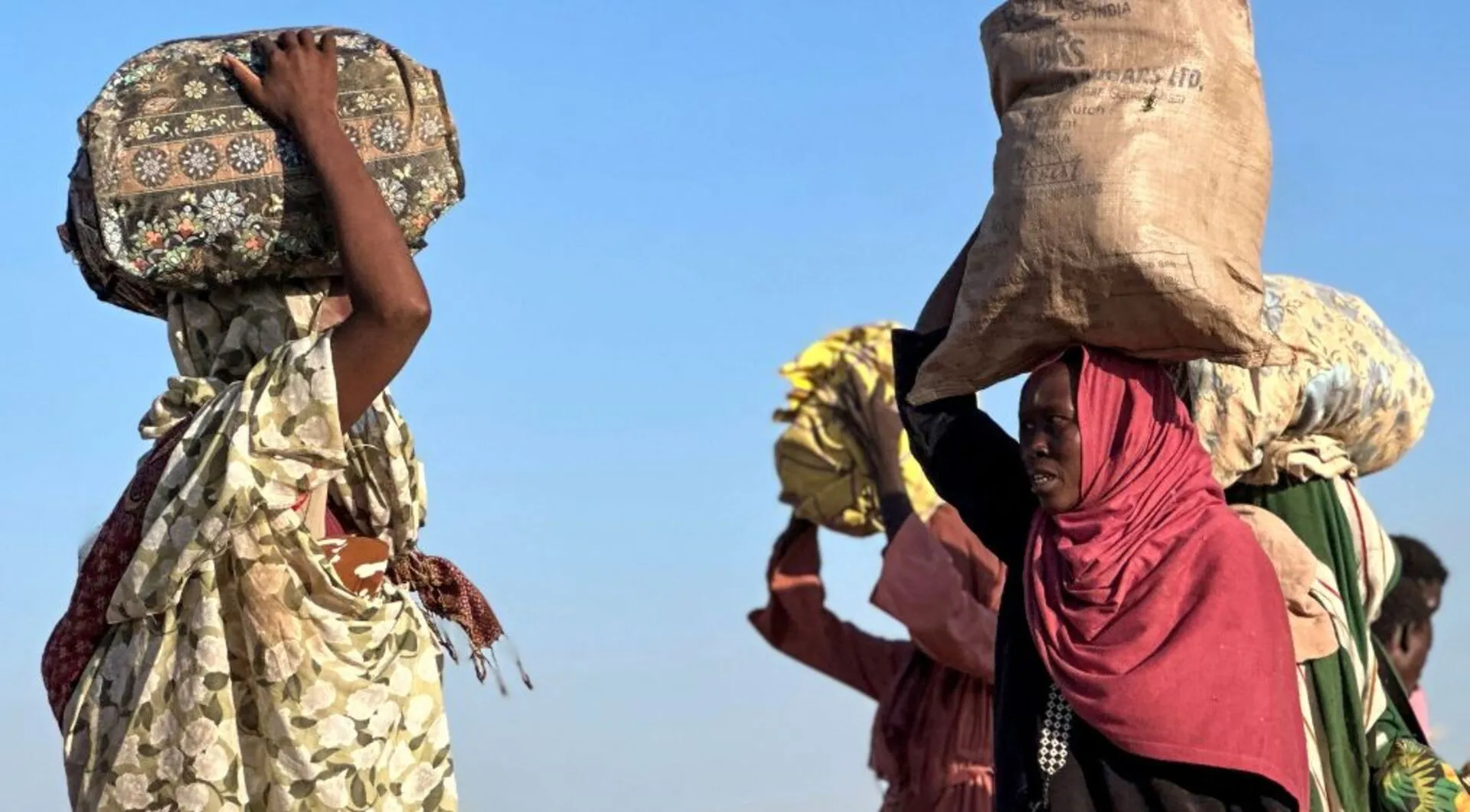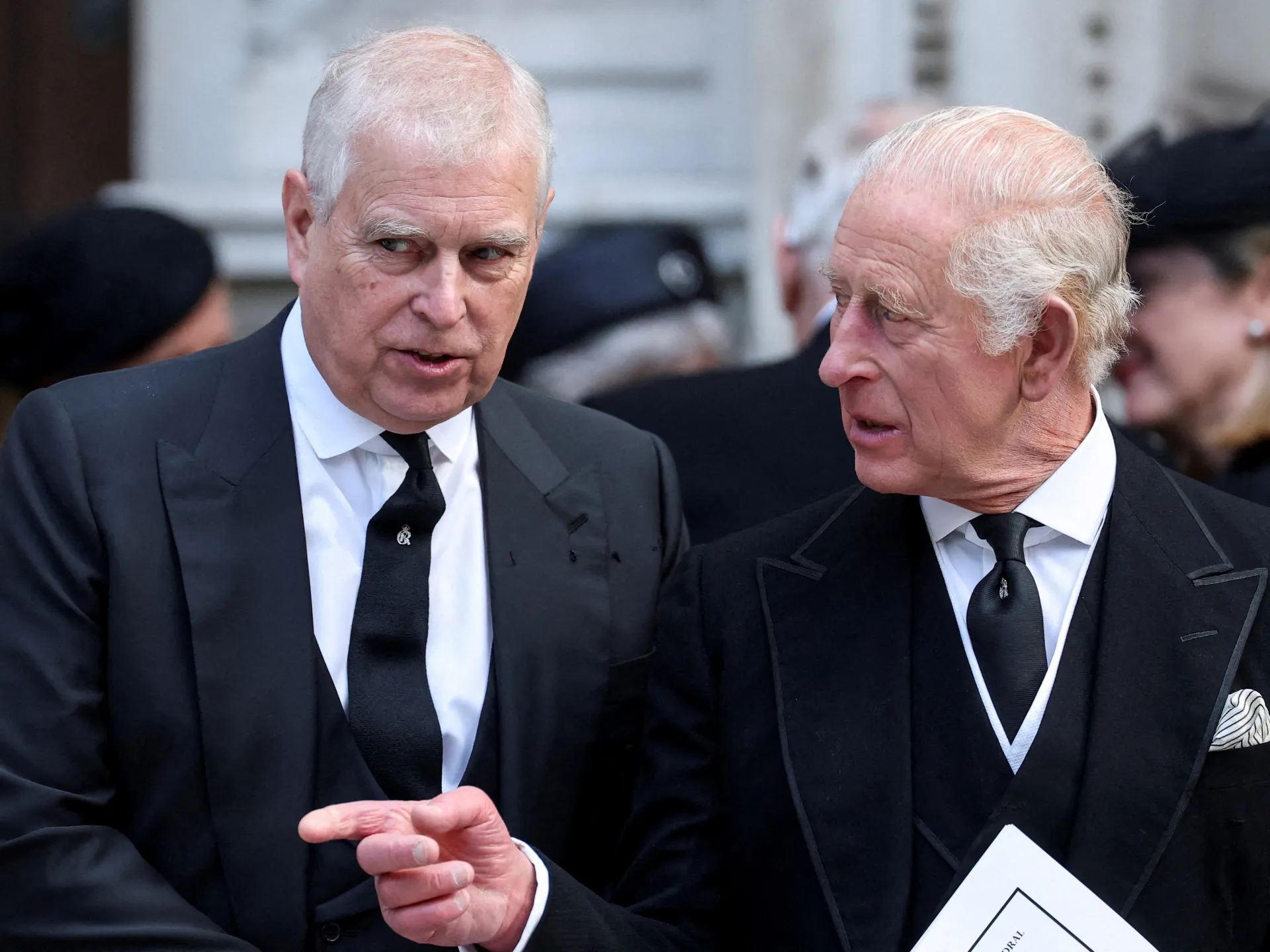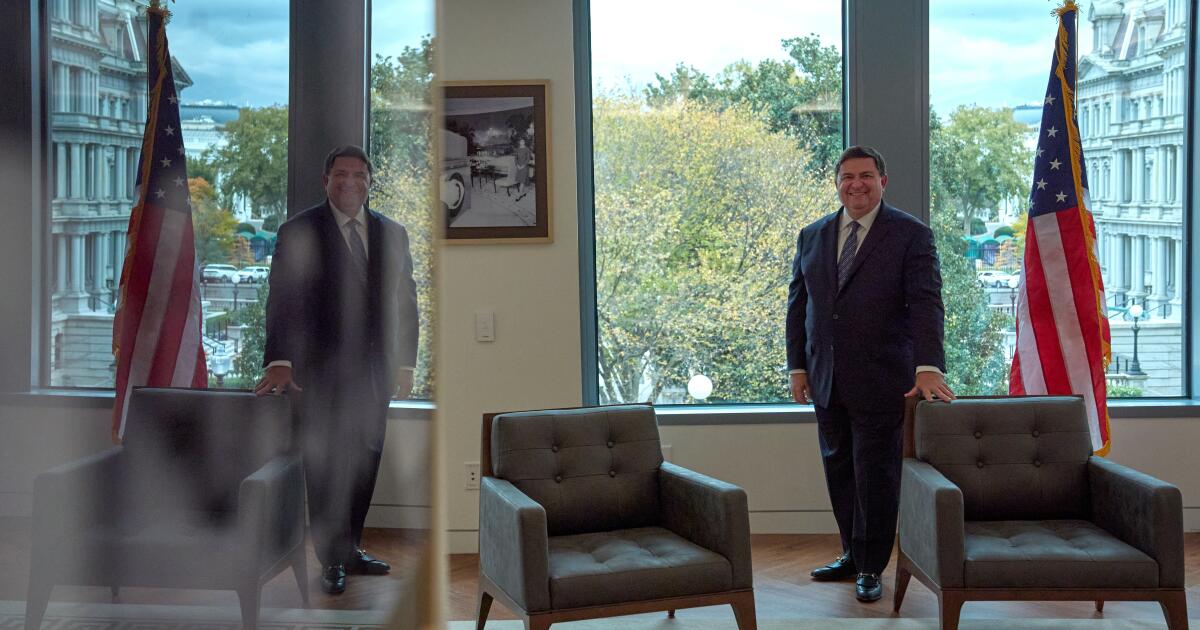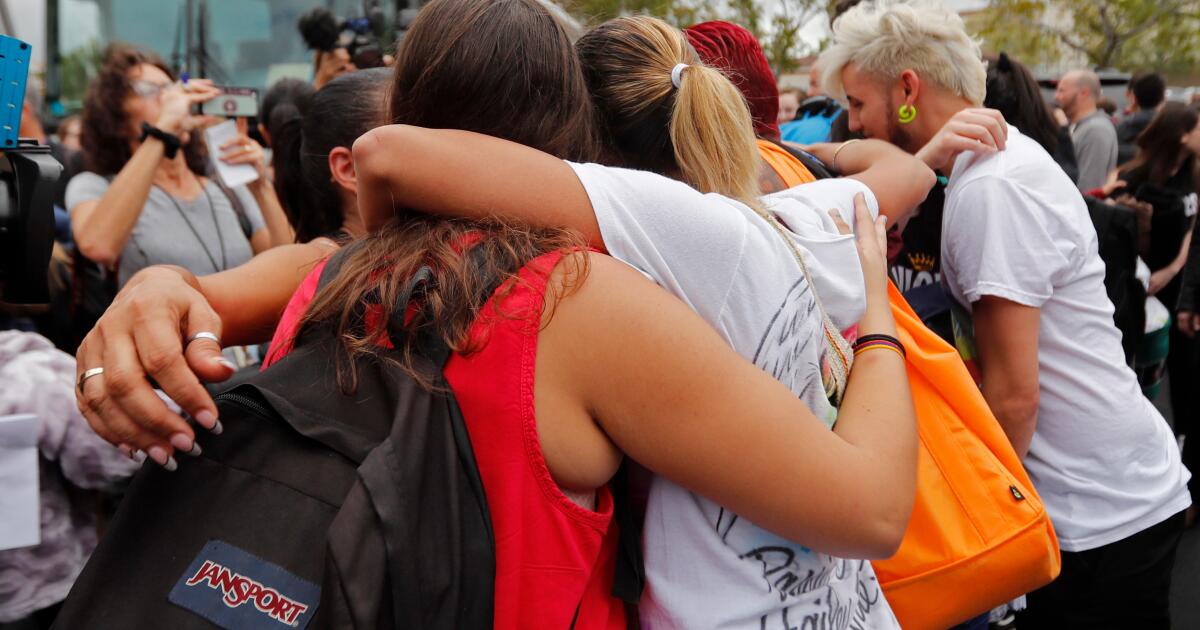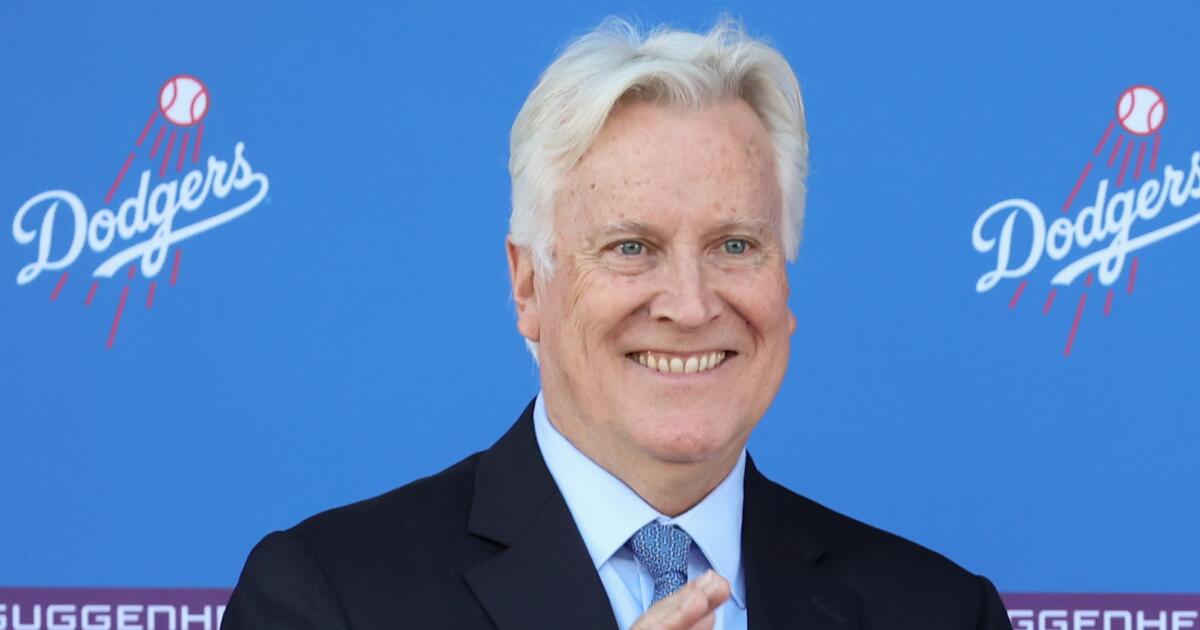BAFTA winner with royal link to narrate King Charles’s Prime Video documentary
An Oscar-winning actress has been revealed as the narrator for a documentary about King Charles III titled Finding Harmony: A King’s Vision, which is due for release in early 2026
A BAFTA-winning actress is set to lend her voice to a Prime Video documentary that explores King Charles‘s dedication to aligning nature and humanity. The documentary, titled ‘Finding Harmony: A King’s Vision’, is slated for release in early 2026.
Narrated by Titanic’s Kate Winslet, it will spotlight the work of The King’s Foundation, a charity established by Charles in 1990. Oscar-winning actress Winslet expressed her excitement about the project, stating: “It is a both pleasure and a privilege to be a part of this film, which is a fascinating insight into the King’s work as an environmentalist.”
She added: “I share His Majesty’s passion for protecting our planet and building sustainable communities, so it’s been really rewarding to work with The King’s Foundation on this exciting project.
READ MORE: Meghan Markle accused of cashing in on royal name in latest As Ever product launchREAD MORE: Prince Harry baffled when quizzed over Taylor Swift after she snubs Meghan
“I know audiences will learn, laugh and feel inspired by what’s featured in the film, and I hope the impact of Harmony will be felt in years to come.”
Earlier this year, the Titanic star, who is now 50, became an ambassador for The King’s Foundation. She was also present at the foundation’s awards ceremony at St James’s Palace in June.
Known for her roles in films such as The Holiday (2006), The Reader (2008) and Revolutionary Road (2008), Winslet is also set to appear in the upcoming Avatar sequel, Fire And Ash.
The documentary following the monarch will delve into the King’s “harmony” philosophy, which views everything in nature as interconnected, including ourselves, as per The King’s Foundation. It will reveal how The King’s Foundation, based at Dumfries House in Ayrshire, Scotland, has championed this philosophy through initiatives centred on community regeneration, sustainable textiles and traditional crafts.
Director Nicolas Brown said: “Working with Kate Winslet on this film has been transformational. She has the perfect blend of intellect and star power to tell this story like no one else could.
“His Majesty King Charles III has lived such an incredible life, striving to bring humankind into harmony with the natural world for over half a century. It’s an epic tale, full of drama, and Kate has turned it into a story that any one of us will relate to. We are so fortunate to have an artist of her calibre on the team.”
Kristina Murrin, chief executive of The King’s Foundation, added: “Through the film we hope that viewers will gain a better understanding of His Majesty’s Philosophy of Harmony, which is so central to our work at The King’s Foundation.
“We are thrilled that Kate is a part of this journey with us and look forward to sharing the film with the world next year.”
Produced by Passion Planet, the documentary will stream exclusively on Prime Video across more than 240 countries and territories worldwide early next year. Last year, Amazon released A Very Royal Scandal – a dramatised account of Prince Andrew’s infamous Newsnight interview.
Like this story? For more of the latest showbiz news and gossip, follow Mirror Celebs on TikTok, Snapchat, Instagram, Twitter, Facebook, YouTube and Threads.
READ MORE: The £23 anti-theft Mary Poppins bag named ‘every day armour’ for holidays
Edison increases compensation for Eaton fire victims, but some say it’s not enough
Southern California Edison increased the number of Eaton fire victims that are eligible to file claims for damages in its final compensation proposal, though some Altadena residents say the utility’s program still falls short.
After talking to residents about the plan it released in July, Edison said it decided to expand the area of homes that are eligible for compensation for smoke damage.
“Expanding the eligibility area is one of the most significant updates made as a result of feedback,” said Pedro Pizarro, the chief executive of Edison International, the utility’s parent company. “The number of qualified properties nearly doubled for those with damage from smoke, soot or ash.”
The utility also increased the amount of compensation it is offering for some victims. For example, each child in a family that lost its home will be eligible to receive $75,000 for pain and suffering, up from $50,000 in the initial plan.
To receive payments under the utility’s Wildfire Recovery Compensation Program, families must agree to drop any lawsuits they filed against the utility for the Jan. 7 fire.
The program also is open to businesses that lost revenues and renters who lost property. And it covers those who suffered physical injuries or had family members who died.
Edison is launching the victim compensation program even though government fire investigators have not released their report on the cause of the fire. The inferno swept through Altadena, destroying 9,400 homes and other structures and killing 19 people.
Videos captured the fire igniting under a century-old transmission line in Eaton Canyon that Edison had not used since 1971, and Pizarro has said a leading theory is that the line somehow re-energized and ignited the blaze. Edison said in a federal securities filing this week that “absent additional evidence, SCE believes that it is likely that its equipment could be found to have been associated with the ignition.”
In documents detailing its final compensation plan, the utility included the example of a family of four with a 1,500-square-foot home that was destroyed. The family would receive $900,000 to rebuild, $360,000 for personal property, $140,000 for loss of use and $380,000 for pain and suffering. It also would receive a $200,000 “direct claim premium” for agreeing to settle outside of court.
That total of $1,980,000 is then reduced by the family’s $1 million of insurance coverage, according to the company’s example.
On Thursday, state Sen. Sasha Renée Pérez (D-Pasadena) sent a letter to Edison saying she was concerned about how the utility was requiring victims to waive their future legal rights in order to get compensation. And she called on Edison to provide immediate housing assistance to fire victims.
“Having acknowledged its potential role in starting the Eaton Fire, Edison must do everything within its power to prioritize the needs of survivors and make this commitment a core part of its corporate duty,” she wrote to Pizarro. “This means ensuring fire victims can recover and rebuild their lives with the support they are owed.”
Edison expects to be reimbursed for most or all of the payments it makes to victims by a $21-billion state wildfire fund that Gov. Gavin Newsom and lawmakers created in 2019 to shield utilities from bankruptcy. Administrators of the wildfire fund told members of the state Catastrophe Response Council this week that they expect Eaton fire claims “to be in the tens of billions of dollars.”
In September, Newsom signed a bill that will bolster the money available by another $18 billion for future wildfires. Under that bill, Edison is allowed to raise electric rates for any Eaton fire costs that exceed the original $21-billion fund.
Some Eaton fire survivors told the council, which oversees the wildfire fund, that Edison’s program fails to fully cover damages suffered by victims. Joy Chen, executive director of the Eaton Fire Survivors Network, recently sent the council a report detailing where her group found shortfalls. For example, Chen said, Edison is deducting a homeowner’s full insurance coverage from the compensation amounts even if the insurer has reimbursed the family for only part of that amount.
“Nine months after Edison’s negligence shattered our lives, the toll is clear,” the group’s report states. “Many have drained retirement savings, maxed out credit cards, or watched marriages and health deteriorate under the strain. “
“You destroyed our homes, lives and community,” the report says of Edison. “Fix what you broke. “
Chen’s group joined with Perez in calling for Edison to provide emergency housing assistance for victims.
Edison said its program is designed “to help the community recover and rebuild faster.” The utility said a report by RAND, the non-profit research group it hired to assess the compensation plan, determined the payment amounts “used modern statistical methods and in our judgment were thoughtfully done and well executed.”
Edison said victims can start filing for claims now and that it expects to get back to them with an offer within 90 days.
England vs Australia: Rugby chiefs pick ‘Bazball’ cricket brains before Wallabies Test
“I asked Brendon how he changed that in English cricket, which was really interesting. Then we got into the technicalities of coaching someone one-on-one, what that looks like, his role as head coach in that versus his assistants.
“We sat for a good period of time and took loads from it. They’re on to a good thing.”
After beginning the series against Australia, England will also face Fiji, New Zealand and Argentina this autumn.
Meanwhile, the cricket team will play five Test matches as they look to regain the Ashes for the first time since they won in Australia a decade ago.
“They’ll go out and give it a great dig – as English teams who are playing against Australia want to – and hopefully we stick one on the board on Saturday,” said Wigglesworth, who was part of the British and Irish Lions set-up as they posted a 2-1 series win against the Wallabies in the summer.
“It’s a great rivalry with Australia. Both sides really enjoy playing against each other because there’s something there. Bring on Saturday.”
England are favourites against Australia, who are ranked seventh in the world.
The Wallabies finished third in the Rugby Championship with two wins from six games and beat Japan 19-15 in Tokyo on Saturday with a much-changed team.
After yet more atrocities in Sudan, what will end the conflict? | Sudan war
Reports of massacres by Rapid Support Forces in North Darfur’s city of el-Fasher.
Reports of massacres by Sudan’s Rapid Support Forces (RSF) in Darfur – after the army was pushed out of the region.
Tens of thousands of civilians are now feared trapped in el-Fasher.
The conflict in Sudan has caused one of the world’s worst humanitarian crises.
So, what can be done to stop the bloodshed?
Presenter: Nick Clark
Guests:
Hamid Khalafallah – Researcher and Policy Analyst
Bakry Eljack – Professor of Public Policy at Long Island University Brooklyn
Justin Lynch – Managing Director, Conflict Insights Group
Published On 30 Oct 2025
King Charles III strips Prince Andrew of titles, evicts him from royal home | News
The rare move comes after mounting pressure to act over Andrew’s relationship with sex offender Jeffrey Epstein.
Published On 30 Oct 2025
King Charles III has stripped his brother Prince Andrew of his remaining titles and evicted him from his royal residence after weeks of pressure to act over his relationship with sex offender Jeffrey Epstein.
Buckingham Palace said on Thursday the king “initiated a formal process to remove the Style, Titles and Honours of Prince Andrew”.
Recommended Stories
list of 3 itemsend of list
After the king’s rare move, Andrew will be known as Andrew Mountbatten Windsor and not as a prince, and he will move from his Royal Lodge residence into “private accommodation”.
It is almost unprecedented for a British prince or princess to be stripped of that title. It last happened in 1919, when Prince Ernest Augustus, who was a UK royal and also a prince of Hanover, had his British title removed for siding with Germany during World War I.
Demand had been growing on the palace to remove the prince from Royal Lodge after he surrendered his use of the title duke of York earlier this month over new revelations about his friendship with Epstein and renewed sexual abuse allegations by one of Epstein’s victims, Virginia Roberts Giuffre, whose posthumous memoir hit bookstores last week.
But the king went even further to punish him for serious lapses of judgement by removing the title of prince that he had held since birth as a child of a monarch, the late Queen Elizabeth II.
“These censures are deemed necessary, notwithstanding the fact that he continues to deny the allegations against him,” the palace said. “Their Majesties wish to make clear that their thoughts and utmost sympathies have been, and will remain with, the victims and survivors of any and all forms of abuse.”
Giuffre’s brother declared victory for his sister, who died in April at the age of 41.
“Today, an ordinary American girl from an ordinary American family, brought down a British prince with her truth and extraordinary courage,” her brother Skye Roberts said in a statement.
Andrew faced a new round of public opprobrium after emails emerged earlier this month showing he had remained in contact with Epstein longer than he previously admitted.
That news was followed by the publication of, Nobody’s Girl, by Giuffre, who alleged she had sex with Andrew when she was 17. The book detailed three alleged sexual encounters with Andrew, who she said acted as if he believed “having sex with me was his birthright”.
Andrew, 65, has long denied Giuffre’s claims, but stepped down from royal duties after a disastrous November 2019 BBC interview in which he attempted to rebut her allegations.
Andrew paid millions in an out-of-court settlement in 2022 after Giuffre filed a civil suit against him in New York. While he did not admit wrongdoing, he acknowledged Giuffre’s suffering as a victim of sex trafficking.
The move by the king means Andrew will no longer be a prince or be known as “his royal highness”, “duke of York”, “earl of Inverness” or “baron Killyleagh” – all titles he held until now. Also gone are honours that include Order of the Garter and status as knight grand cross of the Royal Victorian Order.
Andrew is expected to move to a property on the king’s Sandringham estate near the northeast coast and receive private financial support from his brother.
Pixie Lott gives birth to second child as she shares sweet first look at baby boy
PIXIE Lott has given birth to her second child with Oliver Cheshire.
The All About Tonight singer, 34, announced the happy news on her Instagram on Thursday.
Pixie posted a sweet video of her newborn baby boy and wrote: “He’s here,” with a blue heart emoji.
The clip showed her newborn’s little feet and hands for the first time.
Pixie’s close celebrity pals were quick to congratulate the star.
Gaby Roslin wrote: “Ahhh huge congratulations to you beautiful and your whole family. Big love.”
AJ Odudu posted: “Awww CONGRATULATIONS.”
Earlier this year, the singer revealed she and husband Oliver were expecting their second child.
The couple are already parents to son Albert, who was born in October 2023.
Previously, Pixie and Oliver only revealed their son’s name a month after his birth when they celebrated his christening.
In August, Pixie revealed the due date for her second baby in an exclusive chat with The Sun.
The pregnant star revealed she’d been given the green light to keep performing for “as long as it feels good”.
She shared: “I think the last gig [Flackstock, Aug 8] is going to be four weeks before the due date.
“So yeah, I think it’s going to be fine.
“I did it last time and I’ve checked with the doc and he said that it’s fine to keep doing it as long as you feel good.
“So hopefully, I mean that last show, four weeks, I don’t know how long… Woo! [laughs].”
Meanwhile, Pixie had made the surprise announcement during her performance Mighty Hoopla.
While belting out her hits, she told the crowd: “I’m having another baby!”
Commentary: Bodies are stacking up in Trump’s deportation deluge. It’s going to get worse
Like a teenager armed with their first smartphone, President Trump’s masked immigration enforcers love nothing more than to mug for friendly cameras.
They gladly invite pseudo-filmmakers — some federal government workers, others conservative influencers or pro-Trump reporters — to embed during raids so they can capture every tamale lady agents slam onto the sidewalk, every protester they pelt with pepper balls, every tear gas canister used to clear away pesky activists. From that mayhem comes slickly produced videos that buttress the Trump administration’s claim that everyone involved in the push to boot illegal immigrants from the U.S. is a hero worthy of cinematic love.
But not everything that Immigration and Customs Enforcement, Border Patrol and its sister agencies do shows up in their approved rivers of reels.
Their propagandists aren’t highlighting the story of Jaime Alanís García, a Mexican farmworker who fell 30 feet to his death in Camarillo this summer while trying to escape one of the largest immigration raids in Southern California in decades.
They’re not making videos about 39-year-old Ismael Ayala-Uribe, an Orange County resident who moved to this country from Mexico as a 4-year-old and died in a Victorville hospital in September after spending weeks in ICE custody complaining about his health.
They’re not addressing how ICE raids led to the deaths of Josué Castro Rivera and Carlos Roberto Montoya, Central American nationals run over and killed by highway traffic in Virginia and Monrovia while fleeing in terror. Or what happened to Silverio Villegas González, shot dead in his car as he tried to speed away from two ICE agents in suburban Chicago.
Those men are just some of the 20-plus people who have died in 2025 while caught up in ICE’s machine — the deadliest year for the agency in two decades, per NPR.
Publicly, the Department of Homeland Security has described those incidents as “tragic” while assigning blame to everything but itself. For instance, a Homeland Security official told the Associated Press that Castro Rivera’s death was “a direct result of every politician, activist and reporter who continue to spread propaganda and misinformation about ICE’s mission and ways to avoid detention” — whatever the hell that means.
An ICE spokesperson asked for more time to respond to my request for comment, said “Thank you Sir” when I extended my deadline, then never got back to me. Whatever the response would’ve been, Trump’s deportation Leviathan looks like it’s about to get deadlier.
As reported by my colleagues Andrea Castillo and Rachel Uranga, his administration plans to get rid of more than half of ICE’s field office directors due to grumblings from the White House that the deportations that have swamped large swaths of the United States all year haven’t happened faster and in larger numbers.
Asked for comment, Tricia McLaughlin, Homeland Security assistant secretary for public affairs, described The Times’ questions as “sensationalism” and added “only the media would describe standard agency personnel changes as a ‘massive shakeup.’”
Agents are becoming more brazen as more of them get hired thanks to billions of dollars in new funds. In Oakland, one fired a chemical round into the face of a Christian pastor from just feet away. In Santa Ana, another pulled a gun from his waistband and pointed it at activists who had been trailing him from a distance in their car. In the Chicago area, a woman claimed a group of them fired pepper balls at her car even though her two young children were inside.
La migra knows they can act with impunity because they have the full-throated backing of the White House. Deputy Chief of Staff Stephen Miller crowed on Fox News recently, “To all ICE officers: You have federal immunity in the conduct of your duties.”
That’s not actually true, but when have facts mattered to this presidency if it gets in the way of its apocalyptic goals?
Greg Bovino, El Centro Border Patrol sector chief, center, walks with federal agents near an ICE detention facility in Broadview, Ill.
(Erin Hooley / Associated Press)
Tasked with turning up the terror dial to 11 is Gregory Bovino, a longtime Border Patrol sector chief based out of El Centro, Calif., who started the year with a raid in Kern County so egregious that a federal judge slammed it as agents “walk[ing] up to people with brown skin and say[ing], ‘Give me your papers.’” A federal judge ordered him to check in with her every day for the foreseeable future after the Border Patrol tear-gassed a neighborhood in a Chicago suburb that was about to host its annual Halloween children’s parade (an appeals court has temporarily blocked the move).
Bovino now reports directly to Homeland Security Secretary Kristi Noem and is expected to pick most of the ICE field office directors from Customs and Border Protection, the arm of the federal government that the Border Patrol belongs to. It logged 180 immigrant deaths under its purview for the 2023 fiscal year, the last year for which stats are publicly available and the third straight year that the number had increased.
To put someone like Bovino in charge of executing Trump’s deportation plans is like gifting a gas refinery to an arsonist.
He’s constantly trying to channel the conquering ethos of Wild West, complete with a strutting posse of agents — some with cowboy hats — following him everywhere, white horses trailed by American flags for photo ops and constant shout-outs to “Ma and Pa America” when speaking to the media. When asked by a CBS News reporter recently when his self-titled “Mean Green Machine” would end its Chicago campaign — one that has seen armed troops march through downtown and man boats on the Chicago River like they were patrolling Baghdad — Bovino replied, “When all the illegal aliens [self-deport] and/or we arrest ‘em all.”
Such scorched-earth jibber-jabber underlines a deportation policy under which the possibility of death for those it pursues is baked into its foundation. ICE plans to hire dozens of healthcare workers — doctors, nurses, psychiatrists — in anticipation of Trump’s plans to build more detention camps, many slated for inhospitable locations like the so-called Alligator Alcatraz camp in the Florida Everglades. That was announced to the world on social media with an AI-generated image of grinning alligators wearing MAGA caps — as if the White House was salivating at the prospect of desperate people trying to escape only to find certain carnage.
In his CBS News interview, Bovino described the force his team has used in Chicago — where someone was shot and killed, a pastors got hit with pepper balls from high above and the sound of windshields broken by immigration agents looking to snatch someone from their cars is now part of the Windy City’s soundtrack — as “exemplary.” The Border Patrol’s peewee Patton added he felt his guys used “the least amount of force necessary to accomplish the mission. If someone strays into a pepper ball, then that’s on them.”
One shudders to think what Bovino thinks is excessive for la migra. With his powers now radically expanded, we’re about to find out.
‘Who is No. 12?’ Lakers’ Jake LaRavia let T-wolves fans know
Jake LaRavia is not a household name.
A first-round pick out of Wake Forest in 2022, the Lakers forward has played for three NBA teams without garnering too much attention — at least not until Wednesday night’s game against the Minnesota Timberwolves.
Starting in his second straight game for injury-depleted L.A., which has been without LeBron James all season and Luka Doncic the last three games, LaRavia scored 27 points on 10-of-11 shooting, including five of six from three-point range).
Even then, LaRavia seemed to be toiling in obscurity. A number of fans at Minneapolis’ Target Center started shouting, “Who is No. 12?” — a genuine question as to the identity of the sharpshooter torching their team.
LaRavia, who was born in Pasadena and grew up in Indianapolis, took notice of the puzzled fans and more than once gave them a smile and a slight wave in acknowledgment.
When one fan yelled “Who is No. 12?” early in the fourth quarter — after LaRavia hit a three-pointer to give the Lakers a 105-89 lead — it caught the attention of injured Minnesota star Anthony Edwards on the bench. Edwards responded by spreading his arms above his head and shouting “That’s what I’m saying! I don’t know!”
FanDuel Sports Network broadcast the interaction between Edwards and the fan, and video clips of it have been circulating on social media. Again, LaRavia rolled with it all, writing “lol” in the comments of one such clip and posting the video on his Instagram Story, along with the caption “Cap” (slang for when someone is lying) and two laughing emojis.
The Lakers won the game 116-115 on a last-second floater by Austin Reaves, who had a team-high 28 points and 16 assists. Afterward, LaRavia credited Reaves for setting up most of his shots.
“Yeah, I mean, Austin has 16 assists, so I think they all came from him,” LaRavia told reporters. “But yeah, I was knocking down shots and kind of just getting my rhythm and kept shooting. So when they’re falling, they’re falling.”
LaRavia previously played his best basketball late in the 2023-24 season with Memphis, scoring a career-high 32 points against Cleveland, 28 against the Lakers and 29 against Denver in the final three games of the season. He also scored 25 against the Lakers during a late-March game that season.
Sent to the Sacramento Kings at the trade deadline last season, LaRavia became a free agent after his option was not picked up this summer. He was a career 42.9% three-point shooter, averaging 6.9 points and 3.3 rebounds per game, when he was signed by the Lakers to be a complementary player to the team’s bigger names.
Necessity has given LaRavia a greater role. His first start for the Lakers, which came Monday in a 122-108 loss to Portland, didn’t go so well (three points on one-for-six shooting, 0-for-three from three-point range). LaRavia said a conversation with coach JJ Redick and general manager Rob Pelinka helped him get in the proper mindset for Wednesday’s game.
“They have just been wanting me to be more aggressive scoring,” LaRavia said, “especially with everyone that we have out…. Our conversation with both of them [was] to just come out here and kind of play how I play. I think I did just that.”
He added: “It’s pretty much just like having a scorer’s mentality. A lot of times, I feel like when I’m in the game, I’m looking for an AR or someone else to get off the ball to, like hitting [Deandre Ayton] or whoever it is, and then to just come out tonight and be like, ‘I’m going to go score. I’m gonna be more aggressive myself so that when I am making shots, I can collapse the defense and then kick it out and stuff like that.’ Just to go out there and kind of have that scorers mentality.”
In addition to his scoring against Minnesota, LaRavia also had eight rebounds, two assists, one steal and one block, although Redick said his contributions were even greater than the numbers show.
“For Jake as a Laker, this game now is a reference point,” Redick told reporters after the game. “Not only for the offense — again, two out of the last three games, he’s been phenomenal defensively. … He had six or seven deflections tonight. He ended up with one steal and a block, but that doesn’t really capture his level of activity defensively. And then just continuing to have confidence in his shot and belief in that was big.”
Times staff writers Broderick Turner and Thuc-Nhi Nguyen contributed to this report.
Condemnation of ‘horrifying’ atrocities in Sudan | Sudan war
“No one is safe in el-Fasher.” The UN Security Council condemned escalating violence in Sudan’s Darfur region amid reports of atrocities by the paramilitary Rapid Support Forces. The ambassadors to Sudan and the United Arab Emirates had a heated exchange, with Sudan accusing the UAE of supporting the RSF.
Published On 30 Oct 2025
Letting agent apologises for ‘oversight’ on Reeves rental licence
Becky Morton,Political reporter,
Jack Fenwick,Political correspondent and
Harry Farley,Political correspondent
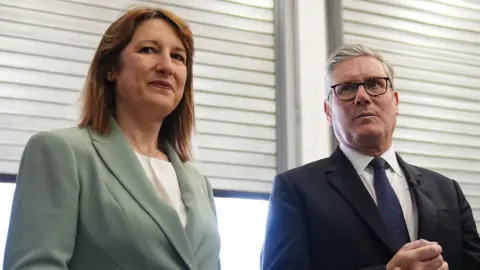 PA Media
PA MediaThe letting agent which rented out Chancellor Rachel Reeves’ family home has apologised for an “oversight” which led to a failure to obtain the correct licence.
Gareth Martin, owner of Harvey & Wheeler, said the company’s previous property manager had offered to apply for a “selective” rental licence on behalf of their client – but this never happened as the individual resigned before the tenancy began.
He added: “We deeply regret the issue caused to our clients as they would have been under the impression that a licence had been applied for.”
Reeves has apologised for the “inadvertent mistake” but said she accepts “full responsibility”.
Downing Street has spent the day defending the chancellor, with a spokesman insisting the prime minister has “full confidence” in her.
Reeves put her four-bedroom south London home up for rent in July 2024, when Labour won the general election and she moved into 11 Downing Street.
The house falls in area where Southwark Council requires private landlords to obtain a selective licence at a cost of £945.
The chancellor said she first became aware that her property did not have the correct licence on Wednesday when the Daily Mail, who first reported the story, contacted her.
Reeves or her letting agent could face an unlimited fine if Southwark Council takes the matter to court.
The revelations come at a politically awkward time for Reeves, who is preparing for a Budget at the end of the month amidst speculation the government is planning to break a manifesto commitment not to raise income tax.
Reeves’ economic responsibility was a hallmark of Labour’s pre-election argument that they could be trusted with the nation’s finances.
But since then, questions about her personal judgement were raised after she accepted free concert tickets as well as thousands of pounds in donations for clothing.
Her political judgement was criticised after she imposed – and then reversed – cuts to the winter fuel allowance.
Errors in her CV further undermined her standing.
Now this adds to a growing list of charges at the chancellor’s door, and it is yet another day when the government completely lost control of the news agenda.
While the letting agent has taken responsibility, Sir Laurie Magnus, the ethics adviser whose findings have felled two previous Labour ministers, is now re-examining her case.
Sir Laurie was said to have been satisfied with Reeves’ explanation, but Downing Street has refused to say whether Magnus believed the chancellor broke the ministerial code.
He is now reviewing emails about the rental arrangements that were sent and received by the chancellor’s husband.
No 10 will be hoping the latest developments – and the apology from the letting agency used by Reeves and her husband – will bring this saga to an end.
Downing Street will still be worried this evening about how this all looks to voters.
In a letter to Sir Keir Starmer on Wednesday evening, she said “we were not aware that a licence was necessary”.
“As soon as it was brought to my attention, we took immediate action and have applied for the licence,” she wrote.
However, in a second letter to the PM on Thursday, Reeves said she had found correspondence confirming that the letting agent had told her husband a licence would be required and that the agency would apply for this on their behalf.
“They have also confirmed today they did not take the application forward, in part due to a member of staff leaving the organisation,” she wrote.
“Nevertheless, as I said yesterday, I accept it was our responsibility to secure the licence. I also take responsibility for not finding this information yesterday and bringing it to your attention.
“As I said to you today, I am sorry about this matter and accept full responsibility for it.”
Reeves has published the emails, which confirm the letting agent agreed to apply for the licence once the new tenant moved in.
In a statement, Mr Martin, the agency’s owner, said: “We alert all our clients to the need for a licence.
“In an effort to be helpful our previous property manager offered to apply for a licence on these clients’ behalf, as shown in the correspondence.
“That property manager suddenly resigned on the Friday before the tenancy began on the following Monday.
“Unfortunately, the lack of application was not picked up by us as we do not normally apply for licences on behalf of our clients; the onus is on them to apply. We have apologised to the owners for this oversight.
“At the time the tenancy began, all the relevant certificates were in place and if the licence had been applied for, we have no doubt it would have been granted.”
The Conservatives have said the prime minister needs to “grow a backbone and start a proper investigation”.
Speaking on LBC, party leader Kemi Badenoch said “maybe it is the letting agents’ fault but it’s this the funny thing with Labour, it’s always somebody else’s fault.”
“Keir Starmer said law makers shouldn’t be lawbreakers, and he was very happy to chase every fixed penalty notice that occurred under the Conservatives,” she said.
“What Rachel Reeves looks like she has done is a criminal offence.
“They didn’t say it was about the seriousness of the offence. They said if the law has been broken, the law has been broken. I’m only holding them to their standards.”
“They spent five years pretending they were the most perfect people and now they had resignation after scandal after resignation, so let the ethics advisor investigate.”

Kim Kardashian says moon landing was fake: ‘Go on Tiktok’
Kim, you’re not doing amazing, sweetie.
Kim Kardashian, long at the center of a few conspiracy theories herself, has cosigned one that’s a fan favorite — and also thoroughly debunked.
During the most recent episode of Hulu’s “The Kardashians,” the fashion and beauty mogul professed her belief that the 1969 moon landing, a watershed moment of great American pride, never really happened. She also tried to get her “All’s Fair” co-star Sarah Paulson to drink the Kool-Aid.
“I’m sending you, like, so far a million interviews with both Buzz Aldrin and the other one [Neil Armstrong],” Kardashian told Paulson on the show.
“Yes, do it,” Paulson told the Skims founder, promising to go on her own “massive deep dive.”
Kardashian then went on to cite an interview that’s made the rounds on TikTok wherein she alleged that Buzz Aldrin — who completed the Apollo 11 mission alongside Armstrong and capsule communicator Michael Collins — gave the hoax away. (The going theory, of course, is that famous footage of the mission was actually filmed on a sound stage.)
“So I think it didn’t happen,” Kardashian concluded, adding that Aldrin, 95, has “gotten old and now he, like, slurs.”
Hours after the episode dropped, NASA Acting Administrator Sean Duffy fact-checked the socialite.
“Yes, @KimKardashian, we’ve been to the Moon before… 6 times!” Duffy wrote Thursday on X. “And even better: @NASAArtemis is going back under the leadership of @POTUS.”
“We won the last space race and we will win this one too,” Duffy wrote.
As for Aldrin’s takes on the matter, a 2022 Reuters article debunked one of the most popular clips used to implicate the former astronaut, which was was taken out of very critical context.
In a shortened version of the clip, Conan O’Brien recounts to Aldrin a childhood memory of his family watching the astronauts walk on the moon.
“No, you didn’t,” Aldrin responds, seemingly contradicting O’Brien’s account. Later in the interview, however, Aldrin clarified that the moon landing itself was authentic, but the animated footage broadcast by TV stations at the time was not.
The National Air and Space Museum has explained that there was a $2.3-million camera on board to capture the real-life images that were sent back to Earth.
Nonetheless, Kardashian doubled down on her opinion when a producer on “The Kardashians” probed further.
“For the record, you think that we didn’t walk on the moon?” the producer asked.
“I don’t think we did. I think it was fake,” Kardashian said, adding that she’s seen several videos of Aldrin allegedly disputing the event.
“Why does Buzz Aldrin say it didn’t happen?” she said. “There’s no gravity on the moon. Why is the flag blowing? The shoes that they have in the museum that they wore on the moon is a different print in the photos. Why are there no stars?”
For what it’s worth, there is gravity on the moon, albeit about a sixth of what it is on Earth, give or take. Hence the footage of astronauts bouncing across the lunar surface but not flying off into space. As far as there being no breeze, NASA planned for the lack of one — a rod can be seen holding up the top of flag, because scientists knew the stars and stripes wouldn’t fly without one. And did we mention that Aldrin did not say it didn’t happen? Yes, we did. We did mention that.
To her credit, Kardashian was self-aware enough to add that people were “gonna say I’m crazy no matter what.”
She also encouraged viewers to look for themselves on Tiktok. Keep in mind, though, the accounts that regularly promote the moon-landing conspiracy theory are also fond of other mistaken notions, like saying the Earth is flat and aliens built the pyramids.
Latin America’s Lost Growth: Deindustrialization Deepens
Deindustrialization and recommodification have been setting Latin American economies back for decades. Can a push for greater productivity put them on track again?
In the 10 years from 2014 to 2023, Latin America’s aggregate economy managed to quietly reach depths unknown even during the dismal Lost Decade that followed the onset of the region’s debt crisis in 1982. The recent period logged average annual growth rates of 0.9%, compared to 2% a year four decades ago, notes Marco Llinás, head of Production, Productivity and Management Division at the Economic Commission for Latin America and the Caribbean (ECLAC), a UN agency based in Santiago, Chile.
The Covid-19 pandemic made a dent, but two parallel trends contributed steadily throughout the period: deindustrialization and the recommodification of exports. Their origins predate 2014, and they can be observed across the region, with perhaps the exception of Mexico.
Future economic historians may wonder why nobody saw it coming, although contemporary analysts still disagree about the relative importance of the two elements. “The phenomenon of deindustrialization is not the same as recommodification,” says Llinás. “The two phenomena may or may not happen at the same time.”
Both continue to play out amid a confluence of factors: the decline and fall of globalization, China’s growing role in the region, and the Trump tariffs, to mention just a few. But how did it start?
Economists of all ideological stripes tend to agree on the steps that have traditionally facilitated the march from underdeveloped to developed. Nations begin with low value-added production and basic services. Then comes industrial development and the emergence of a working middle class. Ultimately, services prevail, often high-end ones fueled by technology. Think of South Korea. In the 1950s, it made headlines for battles in the Korean War over uninhabited strategic landmarks like Pork Chop Hill. Now, it is known as the home of Blackpink.
Until the debt crisis of the 1980s, Latin America seemed to be holding its own. Its aggregate growth rate was 5.2% per year (6.8% in powerhouse Brazil) from 1951 to 1980, ahead of the world (4.5%) and not much shy of Korea (7.5%) and Japan (7.9%), according to a 2004 paper by the Inter-American Development Bank. Using a narrow definition of manufactures, Brazil more than doubled the share of industrial exports in GDP from 10.8% in 1968 to 23% in 1973, fueled by industrial growth of 13.3% a year during that brief period known as the Brazilian Miracle.
From 1981 to 1993, saddled with the debt crisis and its aftershocks, the region stumbled behind with 1.7% annual growth while Korea continued to sprint ahead at 7.2%. As globalization began to help lift parts of the world out of poverty—albeit unequally—in the 1990s, Latin America mostly watched from the sidelines: either by choice, preferring relative isolation, or due to lack of competitiveness.
Premature Deindustrialization
“Premature deindustrialization” is the term economists use to describe a shift away from manufacturing before the economy in question has attained a robust level of industrial production. It happens at income levels lower than today’s richest nations have historically reached. The latter are sometimes called “post-industrial” societies, characterized by high-end, technologically enhanced service sectors.
Premature deindustrialization has also occurred in sub-Saharan Africa and parts of East Asia. But it’s especially striking in Latin America, given the very different trajectory its economies were on prior to the 1980s.
“Argentina’s manufacturing subsystem shows a clear shift toward low-tech employment, with an increasing dominance of low- and medium-low-tech industries, undermining the potential for higher-value-added manufacturing,” Martin Lábaj and Erika Majzlíková of the Bratislava University of Economics and Business write in a recent paper. Brazil “faces the most severe deindustrialization, characterized by a growing reliance on low-tech manufacturing and low-knowledge-intensive services, exacerbating its economic challenges.”
The contribution of manufacturing industries to Brazilian GDP fell from 36% in 1985 to just 11% in 2023, according to official statistics. “Why is it a problem?” Llinás asks. “Because industry has higher productivity and faster productivity growth. Plus, greater potential for expansion.”
Multiple factors cause premature deindustrialization, economists say: globalization; automation, stunting job growth; shrinking global demand for products.
They also point to a litany of “structural factors” that run from resource dependence to weak institutions; and policies that stunt investment such as high taxes, red tape, poor infrastructure, and cumbersome labor laws. “The country is very closed,” says Sérgio Goldman, a São Paulo-based corporate finance consultant, referring to his native Brazil.
Imports began to grow—from $60.4 billion in 1990 to $359.4 billion in 2000, according to World Bank statistics. A dominant traditional trade partner increased its exports of manufactured products to the region. Indeed, evidence of the political nature of Trump’s 50% tariff on Brazil included the fact that the US had a trade surplus with that country.
More recently, observers highlight closer trade ties with China and a subsequent influx of cheap manufactured goods, sometimes sending local producers reeling. “The auto parts sector in Colombia was really hurt by Chinese competition,” says William Maloney, chief economist for the Latin America and Caribbean region at the World Bank Group.
Given many countries’ history of protectionism, innovation is not top-ofmind among Latin American executives, according to Goldman. “My problem is with management,” he says. “Companies lack good managers.”
Whereas Japan parlayed its once abundant copper deposits into the establishment of leading global firms in the sector, Chile never seemed able to follow suit, Maloney notes: “In Chile, only a few firms are near the technological frontier.”
But is deindustrialization due primarily to “automation, trade, robots, or the China shock?” he asks. “It isn’t exactly clear.”
Recommodification
The second significant trend is “recommodification,” or the “reprimarization” of exports.
Thought to be emerging from commodity dependence during the last century, Latin America fell back on churning out greater volumes of raw materials during the commodity boom of the 2000s.
Driven by demand from China, but also India and other fast-growing economies, a 2000-2014 super cycle was followed by a second surge at the beginning of this decade. Each wave tends to leave export volumes at higher baselines; Brazilian soybean exports keep setting records, for example.
Commodities as a percentage of total exports in 2000 vs. 2020 jumped from 41.1% to 55.6% in Brazil, 63.1% to 83.2% in Chile, 55.6% to 65.1% in Colombia, and 73.2% to 85.3% in Peru, according to data provider Trading Economics.
Comparing 2024 to 2023, “agricultural products (11%) and mining and oil (11%) were the main contributors to growth in goods exports, while manufacturing exports remained stagnant,” ECLAC reports.
“Productivity Is Everything”
Pundits and policymakers are notoriously disputatious when it comes to Latin America; the region has dabbled for decades in everything from import substitution to the free market liberalism of the Milton Friedman-inspired Chicago Boys. Nowadays, however, they seem to be reaching a near consensus.
The post-2014 downturn “is in large part due to stagnant and even declining productivity,” posits Llinás. He adds, paraphrasing Nobel Prize-winning American economist Paul Krugman, “productivity isn’t everything, but in the long run it is everything.”
Four of the region’s leading economies—Brazil, Chile, Colombia, and Mexico—are implementing what Llinás calls “productive policies,” which he is careful to distinguish from old-school industrialization strategies. A common characteristic: the selection of a handful of priority sectors, industrial or not. These may include agriculture, mining, or services such as sustainable tourism.
The Brazilan program, for example, earmarked R$300 billion for credit, public purchases, regulatory reform, and infrastructure investments designed to benefit six sectors during the initial 2024-2026 period.
Investment in commodities also has its champions, especially given the potential for innovative spin-offs. Efforts to improve business practices in sectors such as mining and agribusiness can spur investments related to industrial processes and highend services, for example, say Llinás and Kieran Gartlan, a São Paulo-based managing partner of The Yield Lab Latam, a venture capital fund focused on agrifood and climate technology. Gartlan refers to large-scale farms such as Brazilian soybean producers as “open air factories” and points to start-up suppliers that are developing new technologies in fintech, drones, biotechnology, and beyond. His firm has mapped some 3,000 high tech start-ups in the Latin American agricultural sector.
But credit availability is proving a roadblock.
Private banks “don’t really have an appetitive” for farming, Gartlan notes; lacking the expertise to properly evaluate risk, “they put up big spreads that make [credit] expensive for farmers.” Many relatively large producers fail to invest in silos to store crops for sale when prices go up, for example. Instead, they live from harvest to harvest, paying off last season’s bills as the crop comes in.
The will to transform Latin America’s economy—much of it—in a more productive direction is there; the next step is for investors and lenders to buy in.
The East Wing demolition was ‘jarring.’ But a White House history buff sees a silver lining
WASHINGTON — Stewart McLaurin knew it was coming.
An entire wing of the White House, a building he calls “the most special, important building on the planet,” was going to be replaced to make way for a ballroom that President Trump wants to add to the building.
But when McLaurin, president of the White House Historical Assn., saw the first images of backhoes tearing into the East Wing, it still came as a bit of a shock.
“When the reality of things happen, they strike us a little bit differently than the theory of things happening, so it was a bit of a jarring moment,” McLaurin told the Associated Press in an interview Tuesday.
McLaurin, who has led the nonprofit, nonpartisan organization for more than a decade, did not take a position on the changes. It’s not his job. “Ours is not to make happen, or to keep from happening — but to document what does happen, what happens in this great home that we call the White House,” he said.
But he said he sees a silver lining from the “jarring” images: They have piqued public interest in White House history.
“What has happened since then is so amazing in that in the past two weeks, more people have been talking about White House history, focused on White House history, learning what is an East Wing, what is the West Wing … what are these spaces in this building that we simply call the White House,” McLaurin said.
Trump demolishes the East Wing
The general public became aware of the demolition work on Oct. 20 after photos of construction equipment ripping into the building began to circulate online, prompting an outcry from Democrats, preservationists and others.
In a matter of days, the entire two-story East Wing — the traditional base of operations for first ladies and their staffs — was gone. The demolition included a covered walkway between the White House, the family movie theater and a garden dedicated to First Lady Jacqueline Kennedy.
Trump had talked about building a ballroom for years and pushed ahead with his vision when he returned to office in January. His proposal calls for a 90,000-square-foot structure, almost twice the size of the 55,000-square-foot White House itself and able to accommodate 1,000 people. The plan also includes building a more modern East Wing, officials said.
The president ordered the demolition despite not yet having sign-off for the ballroom construction from the National Capital Planning Commission, one of several entities with a role in approving additions to federal buildings and property. The White House has yet to submit the ballroom plans for the commission’s review because it is closed during the government shutdown.
Trump appointed loyalists to the planning commission in July. On Tuesday he also fired the six members of the Commission of Fine Arts, a group of architectural experts that advises the federal government on historic preservation and public buildings. A new slate of members who are more aligned with Trump’s policies will be named, a White House official said, speaking on condition of anonymity because they were not authorized to comment publicly on personnel decisions. The Washington Post was first to report the firings.
East Wing art and furnishings preserved
It was the job of the White House curator and their staff to carefully remove, catalog and store the art, the official portraits of former first ladies, and furnishings from the East Wing, McLaurin said.
The White House Historical Assn. does not have a decision-making role in the construction. But it has been working with the White House to prepare for the changes.
“We had known since late summer that the staff of the East Wing had moved out. I actually made my last visit on the last day of tours on August the 28th,” McLaurin said.
Working with the curator and chief usher, the association used 3D scanning technology “so that every room, space, nook and cranny of the East Wing, whether it was molding or hinges or door knobs or whatever it was, was captured to the nth degree” to be digitally recreated as an exhibit or to teach the history of that space, McLaurin said.
A photographer also documented the building as it was being taken apart. It will be a while before any images are available, but McLaurin said items were found when flooring was pulled up and when wall coverings were pulled back that “no living person remembered were there. So those will be lessons in history.”
White House has grown over the years
Trump’s aides have responded to criticism of the demolition by arguing that other presidents have made changes to the White House too. Trump said the White House needs a bigger entertaining space.
McLaurin said the building continues to evolve from what it looked like when it was built in 1792.
“There is a need to modernize and to grow,” he said, noting that White House social secretaries for generations chafed at the space limitations for entertaining. “But how it’s done and how it’s accomplished and what results is really the vision of the president who undertakes that project.”
What the White House Historical Assn. does
Jacqueline Kennedy created the historical association in 1961 to help preserve the museum quality of the interior of the White House and educate the public. It receives no government funding and raises money mostly through private donations and sales of retail merchandise.
It is not the mission of the association to take a position on construction, McLaurin said. Its primary mandate is preserving the State Floor and some of the historic bedrooms upstairs in the private living quarters, and teaching the history of the White House, which is an accredited museum. The State Floor is made up of the Green, Blue and Red Rooms, the East Room and State Dining Room, the Cross Hall and Grand Foyer.
“Ours is not to support — or to not support,” McLaurin said. “Ours is to understand, to get the details.”
Since the demolition, McLaurin said he has seen attendance spike at a free educational center the association opened in September 2024 a block from the White House. “The People’s House: A White House Experience” is open seven days a week — including during the shutdown.
The educational center had its busiest days the weekend of Oct. 17-19, with about 1,500 daily visitors, up from a previous average of 900, he said.
Superville writes for the Associated Press.
Women’s World Cup 2025: Could India’s semi-final win redefine women’s cricket?
India and Australia have history in World Cups.
There was Harmanpreet Kaur’s unforgettable 171 at Derby in 2017 to seal India’s place in the final, and the near-miss in the T20 semi-final at Cape Town in 2023 as the same player’s bat got stuck in the ground as she was crucially run out.
These two teams had already played out the best match of this tournament’s group stage, with Alyssa Healy’s side chasing 331 on that occasion.
Thursday’s thriller was another example of India and Australia taking the game to new levels.
Phoebe Litchfield’s stunning 119 set up Australia’s 338, supported by half-centuries from Ellyse Perry and Ash Gardner, as India were run ragged in the field.
At the halfway stage Australia’s eight-year unbeaten run at 50-over World Cups looked almost certain to continue.
However, such was Rodrigues’ brilliance – her speed between the wickets, her innovation by shuffling across her stumps, her pinpoint ability to pick the gaps between fielders – that the usually unflappable Australia were rocked.
Healy and Tahlia McGrath put down simple chances, and the team that had not lost a World Cup game since Harmanpreet’s epic were left stunned.
The batting was arguably of the highest quality that women’s cricket has ever seen – but of wider significance is what an India triumph at a home World Cup could mean.
They face South Africa in Sunday’s showpiece, meaning a new winner will be crowned for the first time since 2000.
Both finalists are chasing history – but an India victory could catapult the women’s game to new heights in terms of reach and investment.
“The pace at which women’s cricket is growing in India is unbelievable,” former IPL batter Abhishek Jhunjhunwala told BBC Test Match Special.
“Girls have started playing on the streets with boys, which you never used to see happen. They want to be a Jemimah Rodrigues or a Deepti Sharma.
“It is a proper career now for women. If India go on to win this World Cup, this will change women’s cricket. The game is growing rapidly worldwide but in a commercial aspect, this will change drastically.”
Around the stadiums in India, the shift is obvious in the sheer number of boys and men wearing shirts bearing the names of Smriti Mandhana or Harmanpreet, and the crowds have been electric for the hosts’ games.
The Women’s Premier League, India’s T20 franchise competition, has started the game-changing process with the salaries on offer to players. But based on this sensational semi-final, that could prove to be just the beginning.
L.A. tops Chicago in Orkin’s Rattiest Cities list

Oct. 30 (UPI) — Los Angeles has toppled Chicago as America’s Rattiest City, according to exterminating company Orkin, which publishes a Top-50 list.
“With year-round warm weather, a booming culinary scene and dense neighborhoods that offer ample access to food and shelter, the City of Angels checks every box for rodent survival,” a company press release said.
“From bustling commercial corridors to hidden alleyways, Los Angeles’ signature blend of glam and grit creates a perfect storm for rodent activity.”
Chicago has held the top spot since Orkin created the annual list in 2015
The shift is most likely due to weather patterns, urban infrastructure and human behavior, the press release said.
“Rats and mice are more than a nuisance — they’re opportunists,” Ian Williams, Orkin entomologist, said in a statement. “If there’s food, warmth and a way in, they’ll find it. And once inside, their constant chewing and rapid reproduction can quickly turn a small issue into a large, expensive one.”
Rodents are known carriers of illnesses to humans, including Leptospirosis, Salmonellosis, Lymphocytic Choreomeningitis, plague and typhus.
Orkin measures the number of calls to Orkin to eliminate rats to make the rankings.
The top 25 Rattiest Cities, according to Orkin are, in order, Los Angeles, Chicago, New York, San Francisco, Hartford, Conn., Washington, D.C., Detroit, Philadelphia, Minneapolis, Denver, Cleveland, Baltimore and Boston.
Also, Indianapolis, Dallas, Milwaukee, Seattle, Atlanta, Sacramento, Pittsburgh, Columbus, Tampa, Fla., Houston, San Diego and Grand Rapids, Mich.
Post-Election Violence Risks More Conflict in Fragile Cameroon

The streets have grown restless since Cameroon announced the results of its Oct. 12 presidential election, which returned 92-year-old Paul Biya as the country’s leader for an eighth consecutive term since 1982.
From Douala to Garoua and the capital, Yaounde, protesters have clashed with police, denouncing what they call a “stolen” and “manipulated” election, revealing the deep anger and mistrust that have defined the country’s politics for decades.
Biya, who won the election with 53.66 per cent of the vote as declared by the Constitutional Council, is Africa’s oldest and one of the world’s longest-serving leaders. This latest election extends his 43-year rule for another seven years.
Biya’s main challenger, Issa Tchiroma Bakary, a former ally turned critic, rejected the results, claiming victory based on his campaign’s own tallies. He accused the government of “manipulating the will of the people” and called for nationwide demonstrations. His appeal quickly spread through social media and opposition networks, sparking street protests that soon turned violent.
Other opposition parties and civil society groups have also raised concerns about the credibility of the election. They point to unusually high voter turnouts in some districts, inconsistencies in vote tabulation, and the speed at which results were certified.
But the anger on the streets is about more than the election. For many, the problem is about a system they say is built to protect incumbency and silence opposition.
Cameroon has been grappling with multiple crises that have weakened its social and political fabric. For nearly a decade, the country has battled separatist insurgencies in the English-speaking North West and South West regions, jihadist attacks in the Far North and the border with Nigeria, and worsening economic hardship in its cities. The election, analysts warned before the vote, could act as a trigger to more instability in the country. Those fears have now materialised.
The violent ongoing protests have claimed the lives of at least four people, and hundreds have been arrested. Observers suggest the figure may be higher.
The UN Human Rights Office has since called on security forces to “refrain from the use of lethal force” and urged protesters to demonstrate peacefully. It also reminded authorities of their obligation to respect international human rights law and called for restraint from all political actors.
“We urge the authorities to ensure prompt, impartial and effective investigations into all cases of election-related violence, including the use of unnecessary or disproportionate force, and to bring those responsible to justice,” the UN statement read.
Douala, the country’s economic capital and largest city, has been the epicentre of the post-election unrest. Eyewitnesses report scenes of gunfire, barricades, and hurried funerals in the city.
In the north, Garoua has also seen violence after reported attacks near Tchiroma’s residence. Smaller towns have joined in, with reports of arrests and clashes spreading across the country. Observers warn that the tension risks taking on ethnic and regional dimensions — a dangerous trend in an already divided nation.
Ethnic divisions have long shaped Cameroon’s politics, and the 2025 election has further exposed these fractures. President Biya’s support remains anchored in his Beti/Bulu base from the Centre and South, while many Bamiléké and Anglophone communities continue to feel excluded from power. The candidacy of Issa Tchiroma, a northern Fulani politician, introduced another layer to the political landscape but did little to ease existing mistrust. Although some of his support came from northern and western groups united mainly by opposition to Biya, the campaign and its aftermath remained charged with ethnic undertones.
As these divisions deepened, tensions between the authorities and the opposition escalated sharply. The government has accused Tchiroma and his supporters of inciting violence and promised to hold them accountable through legal action. Officials say the state is acting to preserve order, but critics argue that the heavy-handed response risks deepening public resentment. Security operations, arrests, and reported internet restrictions have further strained the situation. Access to several areas has been cut off, making it difficult for journalists and humanitarian workers to verify reports of casualties or destruction. However, Tchiroma promised to continue his push until “final victory”.
As the unrest spreads, attention has also turned to the country’s conflict-prone Anglophone regions. Separatist movements are watching closely, with many viewing the chaos as proof of the central government’s weakness and are using the moment to push their demands for independence. Local leaders warn that any harsh crackdown by the state could inflame tensions in areas where peace is already fragile.
“Had Biya and his entourage exercised more care in the months before the vote and understood the depth of the government’s unpopularity, this standoff might have been averted,” wrote the International Crisis Group.
Beyond the immediate crisis, the unrest underscores a deeper issue — the fragility of Cameroon’s democratic institutions. Elections are meant to provide legitimacy and a peaceful means of political competition. Instead, they have become flashpoints for unrest. For many young people who have grown up knowing only one president, the sense of disillusionment runs deep. Unemployment remains high, corruption is endemic, and the promise of reform feels distant.
International reactions have been predictable but cautious. Western governments and regional bodies have called for dialogue and restraint. While congratulating Biya on his re-election, the Chairperson of the African Union Commission, Mahmoud Ali Youssouf, stated that he “is gravely concerned about the reported violence, repression and arrests of protesters and political actors in connection with the election results.”
Youssouf urged “the Cameroonian authorities to accord topmost priority to inclusive national dialogue and consultation with all political stakeholders in order to reach consensus in the spirit of national unity, peace and collective security.”
Whether those appeals will be heeded remains uncertain. What happens next depends on how the government and opposition respond in the coming weeks. Analysts warn that Cameroon stands at a crossroads. A violent crackdown could trigger a wider crisis, while genuine dialogue might begin to ease the tension.
The first step, according to the International Crisis Group, should be an independent review of the election results and the violence that followed — a process that includes civil society, opposition representatives, and credible international observers.
Equally critical is the release of protesters detained for exercising their right to peaceful assembly. Restoring communication channels, lifting internet restrictions, and creating safe conditions for independent reporting would also help reduce misinformation and rebuild trust.
But the challenges go far beyond the current unrest. Cameroon’s long-term stability depends on addressing structural grievances, from political exclusion and corruption to the Anglophone crisis that has displaced hundreds of thousands. The government’s reliance on military solutions in the separatist regions has failed to end the conflict, while economic inequality and youth unemployment continue to feed discontent nationwide.
Without deep reform, each election risks becoming another trigger for instability. Political analysts argue that the ruling party must open the political space, allow real competition, and engage communities long excluded from decision-making. “Cameroon’s democracy has been reduced to a ritual,” one Cameroonian journalist told HumAngle. “People vote, results are announced, and nothing changes.”
For now, calm remains fragile. Markets have slowed, schools have closed in some regions, and the streets are lined with soldiers. In several cities, families are mourning relatives caught in the violence. Others fear more crackdowns as protests continue.
The coming days will test whether President Biya’s government can navigate the crisis without pushing the country into deeper turmoil — or whether the unrest will harden into yet another chapter of Cameroon’s long struggle between power and the people.
If the country fails to learn from this moment, the cycle of repression and resistance will only deepen. And for millions of Cameroonians weary of conflict, the dream of a peaceful transition of power will remain just an illusion.
Emmerdale ‘kills off’ character without warning as unexpected villager turns violent
Emmerdale may have aired a brutal and unexpected death on Thursday night, as one teen committed a violent act in self-defence as the County Lines plot escalated
Another death could be looming on Emmerdale, months on from multiple characters facing grim demises.
Thursday’s episode hinted a character had been killed off without warning, while another villager could face a grim fate too. A character was attacked with a glass bottle, and left lifeless and bleeding in dramatic scenes.
There was also concern for missing teenager Dylan Penders who had not been seen since another run-in with villain Ray Walters. As for the possible death victim, newcomer Callum was attacked in self-defence by teenager April Windsor.
She was left shaken when she saw Callum slumped on the bed after she hit him, with blood pouring from his head. He looked dead if not seriously injured, while fans will have to tune in on Friday to find out his fate.
READ MORE: Coronation Street star reveals favourite’s return and teases mystery new characterREAD MORE: Emmerdale fans fume over ‘invisible’ character: ‘How has no one noticed?’
He had just forced himself on April, attempting to rape her after she tried to flee the room they were in. She’d been sent there by Ray and evil Celia, who are heading up a dangerous drugs scheme which April and Dylan have been drugged into.
Convincing April and Dylan they are in serious debt, Ray and Celia have made it clear that they expect 16-year-old April to have sex with their clients to pay the money back, and to keep their clients returning. The grim storyline has also seen the pair getting closer to other villagers linked to April to put on the pressure.
April is terrified, and reluctantly agreed to meet with client Callum knowing he was paying Ray and Celia to sleep with her. As the episode went on, a scared April decided she didn’t want to go through with it.
Callum turned on her though, claiming he didn’t care what she did or didn’t want and he was “gonna do it anyway”. He then warned her there was no escape as he’d locked them both in.
As he began to undress the teenager, April freaked out and pushed him away only for him to grab her. As she managed to get him off, she picked up the vodka bottle and slammed it over his head.
Callum landed on the bed lifeless, with blood pouring out from his head. April gasped as she watched on terrified, but has she killed him? If she has, how will Celia and Ray react?
It comes as Mark Charnock, who plays April’s father Marlon Dingle, teased a massive twist is on the way. He said something that happens in a special episode with April and Marlon left him “thrown”.
Emmerdale airs weeknights at 7:30pm on ITV1 and ITVX, with an hour-long episode on Thursdays. * Follow Mirror Celebs and TV on TikTok , Snapchat , Instagram , Twitter , Facebook , YouTube and Threads .
Judges rule some Florida gun laws are unconstitutional. Here’s what to know
TALLAHASSEE, Fla. — A pair of court rulings declaring some of Florida’s gun restrictions unconstitutional are creating some confusion in the notoriously firearm-friendly state — and fueling activists’ calls for Republican legislators to take action to update state statutes so they abide by the new legal landscape.
Despite Florida’s history of being a gun-supporting climate, Florida’s GOP-dominated state Legislature took steps to restrict gun laws in the wake of the 2018 mass shooting at Marjory Stoneman Douglas High School in Parkland. Since the day the measure was signed into law, gun rights advocates have been pushing to unravel it.
Now, activists say recent court rulings are fueling their push to expand gun rights in the state, emboldened by U.S. Supreme Court’s updated standards for evaluating gun laws based on the nation’s historical tradition of firearm regulation.
“Leaving unconstitutional laws on the books creates nothing but confusion,” said Sean Caranna, executive director of the advocacy group Florida Carry.
Here’s what to know.
Judge finds age restriction on concealed carry unconstitutional
A ruling by a circuit court judge in Broward County, home to Fort Lauderdale, found that Florida’s prohibition against people under the age of 21 from carrying a concealed firearm is unconstitutional, at least as it relates to the case in question.
Last week, Judge Frank Ledee tossed out the conviction of 19-year-old Joel Walkes, who was charged with a third-degree felony for carrying a concealed handgun. Florida statutes currently allow people between the age of 18 and 20 to possess a firearm, if they legally receive it as a gift or an inheritance, but they are barred from purchasing guns or carrying them concealed.
Ledee found the state’s prohibition is incompatible with the Supreme Court’s historical test, and inconsistent with a recent appeals court ruling that found a state law banning the open carrying of firearms is unconstitutional. In his decision, the judge pointed to the Legislature’s role in codifying and clarifying the changes.
“Distilling these inconsistencies into a framework of firearm regulations compatible with the guarantee to bear arms pursuant to the Second Amendment to the United States Constitution is best left to the wisdom of legislative debate,” Ledee wrote.
Open carry ruling sparks questions
Florida’s 1st District Court of Appeal issued its ruling last month in a case stemming from the July 4, 2022, arrest of a man who stood at a major intersection in downtown Pensacola carrying a visible, holstered pistol and a copy of the U.S. Constitution.
The decision legalizes open carry, though there are preexisting limitations against carrying in a threatening manner or in certain restricted spaces like government meetings, schools and bars. The ruling has prompted some Florida sheriffs to urge caution among gun owners and seek clarity from lawmakers.
Legalizing open carry has long been a major focus of gun rights activists in the state, who oppose the slate of restrictions that Florida lawmakers implemented in the wake of the Parkland school shooting, which killed 17 people and injured 17 others. Among the law’s provisions was raising the legal gun-buying age to 21.
Bob Jarvis, a law professor at Nova Southeastern University, said the recent court decisions put more onus on lawmakers to enact state statutes that line up with recent judicial rulings.
“I would not be surprised if in the next session the Florida Legislature doesn’t just take care of this by amending the statute to say, ‘clean it up.’ And then that’ll end all these lawsuits and possible lawsuits,” Jarvis said of the age-related prohibition. “And that’s really now what should happen.”
Advocates push for expanding gun laws
In the years since the 2018 Parkland shooting, lawmakers’ efforts to lower the gun-buying age to 18 have advanced in the Florida House but ultimately failed in the state Senate.
Now some advocates say the recent court rulings should force the hand of legislators who have opposed expanding gun rights in the past.
“We’ve been telling the Legislature since 2010 that this was going to be a problem for them if they didn’t act. And they chose not to act,” Caranna said.
“I hope that given some of the recent decisions from the United States Supreme Court and the Florida courts, that they will finally see that the 2nd Amendment is not a second-class right,” he added.
Representatives for Florida’s House speaker and Senate president did not immediately respond to inquiries Wednesday.
Payne writes for the Associated Press.
NBA approves Buss sale of Lakers to Dodgers owner Mark Walter
The NBA board of governors unanimously approved Mark Walter’s bid to buy a majority stake in the Lakers on Thursday, the league announced, marking a major shift for one of L.A.’s most significant sports teams.
The Lakers had been a family-run team since Dr. Jerry Buss bought the franchise in 1979. When he died in 2013, control went into a family trust with daughter Jeanie Buss acting as the team’s governor. The Buss family built the team into one of the most recognizable brands in sports, eventually attracting a record-breaking $10-billion valuation. While the sale was finalized, Jeanie Buss will be the team’s governor for at least five years after the transaction officially closes, the league announcement stated.
“The Los Angeles Lakers are one of the most iconic franchises in all of sports, defined by a history of excellence and the relentless pursuit of greatness,” Walter said in a statement released by the team. “Few teams carry the legacy and global influence of the Lakers, and it’s a privilege to work alongside Jeanie Buss as we maintain that excellence and set the standard for success in this new era, both on and off the court.”
Walter, who also heads the group that owns the Dodgers and the Sparks, was seated next to Buss at the Lakers’ season opener on Oct. 21. Walter and Todd Boehly have been minority stakeholders in the Lakers since 2021 when they bought 27% of the franchise.
To represent the team as a governor, a minority owner must have at least 15% stake of their team. Buss will continue to oversee day-to-day team operations for the foreseeable future, the Lakers announced.
“Over the past decade, I have come to know Mark well — first as a businessman, then as a friend and now as a colleague,” Buss said in a statement. “He has demonstrated time and time again his commitment to bringing championships to Los Angeles, and, on behalf of Lakers fans everywhere, I am beyond excited about what our future has in store.”
During a recent Lakers game, when the camera panned to Buss and Walter sitting courtside, Buss held one finger up to show off a gaudy Lakers championship ring. In 2020, she became the first female controlling owner to win an NBA championship as the Lakers collected their 17th title.
With 11 championships under the Buss family’s watch, the Lakers became a global sports phenomenon with stars including Kareem Abdul-Jabbar, Magic Johnson, Shaquille O’Neal and Kobe Bryant plus the latest wave of LeBron James and Luka Doncic. When Doncic signed a three-year, $165-million contract extension in August, the 26-year-old superstar thanked both Walter and Buss for their belief in his talent.
Hamas hands over two bodies after Israel resumes attacks on Gaza | Hamas News
The Palestinian group Hamas has handed over two bodies it said were of deceased Israeli captives, a day after the fragile Gaza ceasefire was shattered by a series of deadly Israeli strikes across the besieged enclave.
The office of Israeli Prime Minister Benjamin Netanyahu said on Thursday that the two bodies had been received by Israeli forces via the Red Cross in Gaza and would be transported into Israel for identification.
Recommended Stories
list of 3 itemsend of list
Under the US-brokered accord to halt Israel’s two-year war on Gaza, Hamas released 20 living captives in exchange for Israel releasing nearly 2,000 Palestinian political prisoners. Israeli forces have also completed a partial withdrawal from urban centres in Gaza.
But since the ceasefire took effect on October 10, Israeli attacks have killed dozens of Palestinians across the enclave. From Tuesday into Wednesday, the Health Ministry in Gaza said Israeli attacks killed 104 people, including 46 children and 20 women.
As part of the agreement, Hamas committed to returning the remains of all 28 captives, in exchange for the bodies of Palestinians killed in the war. By Thursday, it had handed over 15 sets of remains, saying it continues to press for proper equipment and support to comb through vast mounds of rubble and debris — where thousands of Palestinians killed in Israeli bombardments are still buried.
Israel claims Hamas has been too slow to hand over the remaining bodies of Israeli captives still in Gaza.
Reporting from az-Zuwayda in central Gaza, Al Jazeera’s Tareq Abu Azzoum said Hamas is still facing “logistical and operational challenges regarding the retrieval of the bodies, specifically in areas that have been impacted by the Israeli bombardment”.
“Hamas has been calling for the entry of heavy bulldozers and machines in order to facilitate the process of recovering bodies. But on the ground, Israel is still accusing Hamas of deliberately procrastinating the release of the bodies,” Abu Azzoum said.
The dispute over the recovery and handover of bodies has been one of the difficulties complicating US President Donald Trump’s plan to end the war for good.
Numerous major obstacles still lie ahead, including the future administration of Gaza and the demand for Hamas to disarm.
‘Essential role of NGOs’
Earlier, witnesses said Israeli planes carried out 10 air strikes in areas east of Khan Younis in the southern Gaza Strip, and tanks shelled areas east of Gaza City in the north before dawn.
The Israeli military said it carried out “precise” strikes against “terrorist infrastructure that posed a threat to the troops” in the areas of Gaza where its forces are still present.
Meanwhile, a UN official said more than 24,000 tonnes of UN aid have reached Gaza since the start of a ceasefire, while calling for NGOs to be allowed to assist in its distribution.
While aid volumes are significantly up compared with the period before the ceasefire, humanitarians still face funding shortfalls, the UN says, as well as issues coordinating with Israeli authorities, which are continuing to seal vital border crossings.
The World Food Programme’s Middle East Regional Director Samer Abdel Jaber said in 20 days of scale-up following the ceasefire, they “have collected about 20,000 metric tons of food inside Gaza”.
“The implementation of the 20-point [ceasefire] plan remains to be the central point and the central condition for us to be able to deliver humanitarian assistance in a holistic manner,” Alakbarov said.
He called on Israel to allow more NGOs to participate in the delivery of aid in Gaza, which Israel has banned.
“The persisting issue of registration of NGOs remains to be a bottleneck issue. We continue to emphasise the essential role of NGOs and national NGOs, which they play in humanitarian operations in Gaza, and we have escalated this now,” he said.
Israel’s assault has displaced most of Gaza’s more than two million people, many of them several times. The majority haven’t yet returned to their ravaged neighbourhoods, fearing they could soon be displaced once again or killed by Israeli forces.
Sources told Al Jazeera that the Israeli army carried out home demolitions east of the Tuffah and Shujayea neighbourhoods in eastern Gaza City on Thursday.
Israel has been demolishing homes since the start of its renewed ground incursion in the area earlier this month, part of what residents describe as a systematic campaign to clear large swaths of residential blocks.
Entire streets have been levelled, with bulldozers flattening homes and infrastructure as Israeli forces push deeper into Gaza City’s eastern districts.



